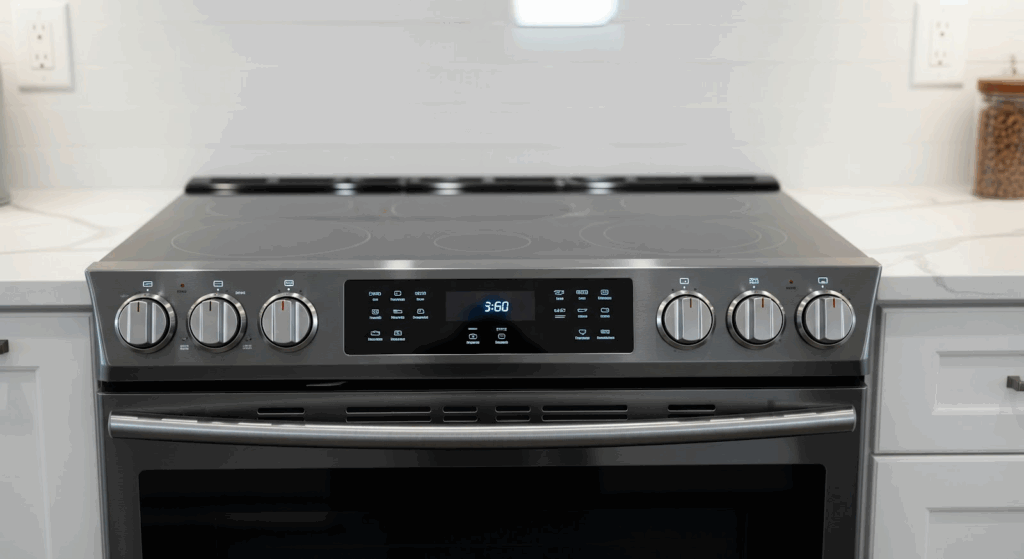
The main control board manages your Samsung range’s functions. With regular use, accidental damage, or age, this part can wear out or stop working.
Common signs of a faulty control board include error codes, an unresponsive range, or a non-working display. With a few basic tools and some time, you can replace the control board yourself and avoid a service call.
What You Will Need
- Phillips head screwdriver
- New main control board
Safety Tips
Before starting, always focus on safety:
- Disconnect the appliance from the power source by unplugging it or turning off the circuit breaker.
- If the range was recently used, allow it to cool completely before starting any work.
- Work slowly and carefully to avoid accidents.
- Set up your work area with plenty of light so you can clearly see what you are doing.
- Keep the workspace organized. Make sure children and pets stay away while you work.
- Never handle parts with wet hands. Work in a dry area.
- Review your range’s user manual for any specific installation or safety instructions.
- Handle parts gently. Avoid using too much force to prevent damage or injury.
- Wear insulated work gloves to protect your hands from sharp metal parts or debris.
- When working with wires, avoid touching any exposed terminals. Use insulated tools or gloves if you need to handle wires.
- Take photos or make notes of all wiring connections before disconnecting anything. This will help with reassembly later.
How to Replace the Main Control Board on a Samsung Range
Here are the steps to remove the old control board and install a new one.
Disconnect Power
- Unplug the range from the wall outlet or turn off the circuit breaker supplying power to the range.
- Pull the range away from the wall to access the back panel.
Remove the Old Control Board
- Locate and remove the Phillips head screws that secure the back panel cover behind the control panel.
- Take a clear, close-up photo of the wiring connections on the control board for reference.
- Carefully disconnect all wiring connectors from the old control board.
- Remove the screws holding the old control board in place.
- Lift the old control board out of the control panel.
Install the New Control Board
- Position the new control board in the same spot where the old board was located.
- Secure the new control board with the screws you removed earlier.
- Reconnect all wiring to the new control board using the photo you took for guidance.
Reassemble and Test
- Replace the back panel cover and secure it with the Phillips head screws.
- Slide the range back into its original position against the wall.
- Plug the range back into the wall outlet or turn the circuit breaker back on to restore power.
- Test the range to confirm the new main control board is functioning correctly.
Also Read: Pro tips for replacing the main control board in a Samsung range
After Replacement: Testing and Final Checks
Once the new control board is installed, it is important to make sure everything is working correctly:
- Reconnect the appliance to the power source
- Turn on the appliance and look for any immediate error codes or warning lights
- Test each burner and oven setting one by one
- Check the display to make sure it is fully functional
- Listen for any unusual sounds during operation
- Watch for any signs of electrical burning or strange odors
- Verify that all buttons and control knobs respond as they should
- Double-check that all screws and panels are secured tightly
- Keep an eye on the appliance for the first few uses after replacement to catch any problems early
What to Remember
Replacing the main control board on your Samsung range might sound like a big project, but it’s really just a matter of staying organized and taking your time. Once you’ve got the right tools and follow each step carefully, the process becomes manageable—even if it’s your first time working with appliance parts.
Make sure to test everything once you’re done and keep an eye on the range during the next few uses. If it’s working as expected, you’ve just saved yourself a repair call and probably learned something useful in the process.
